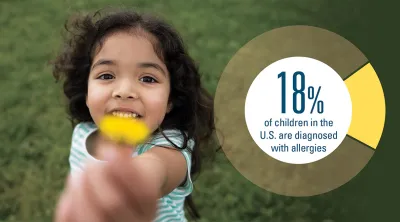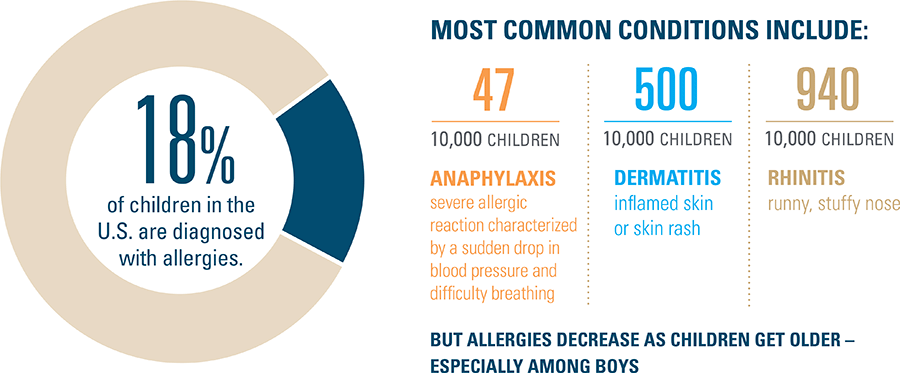
18 percent of children in the U.S. are diagnosed with allergies. The most common conditions include anaphylaxis, dermatitis, and rhinitis. 47 out of every 10,000 children experience anaphylaxis, which is a severe allergic reactions characterized by a sudden drop in blood pressure and difficulty breathing. 500 out of every 10,000 children experience dermatitis, which is inflamed skin or a skin rash. And 940 out of every 10,000 children experience rhinitis, which is a runny or stuffy nose.
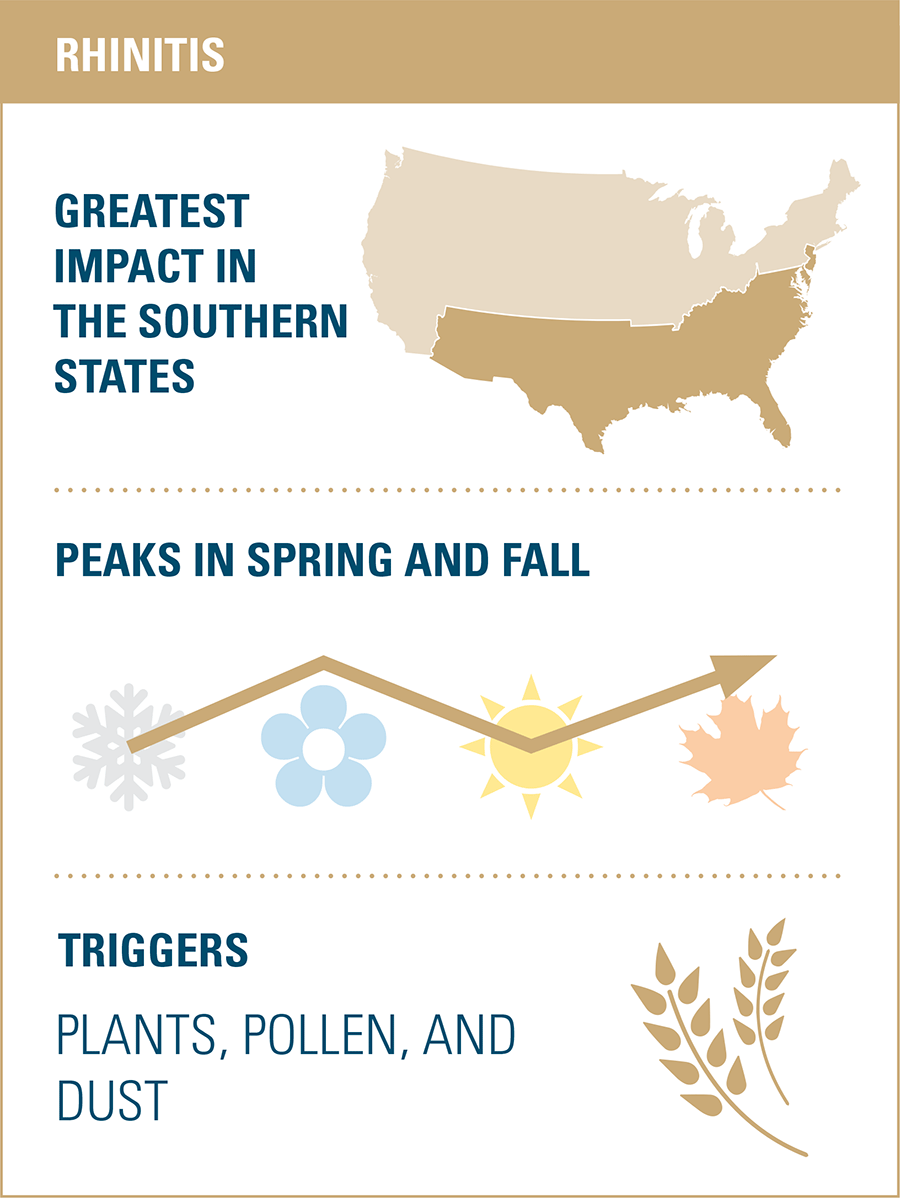
Rhinitis has the greatest impact in the southern states. It peaks in the spring and fall and is triggered by plants, pollen, and dust.
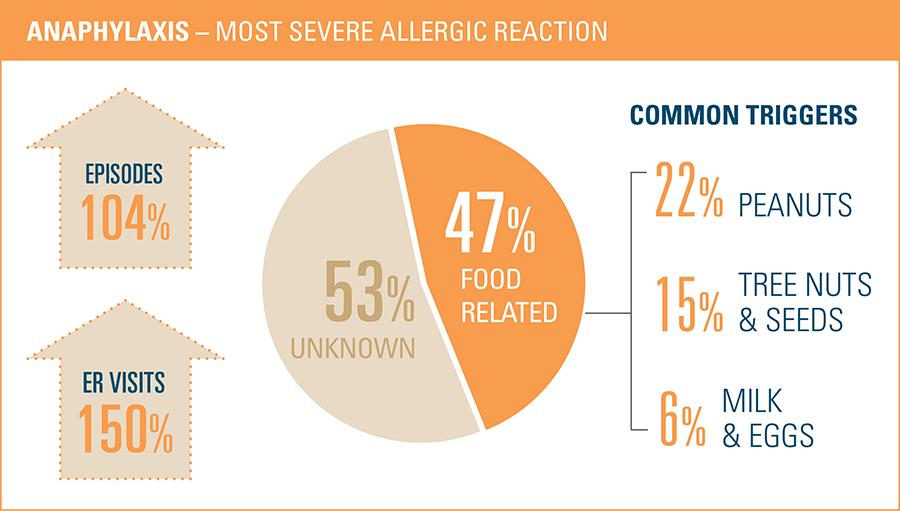
Anaphylaxis is the most severe allergic reaction. Reports of anaphylactic episodes are up 104 percent and ER visits are up 150 percent. 53 percent of anaphylactic episodes have an unknown cause. 47 percent of anaphylactic episodes are food-related. Of those, the most common triggers are peanuts (22 percent), tree nuts and seeds (15 percent), and milk and eggs (6 percent).

The triggers for dermatitis are laundry detergent and soaps, makeup, clothing, and jewelry and metals.
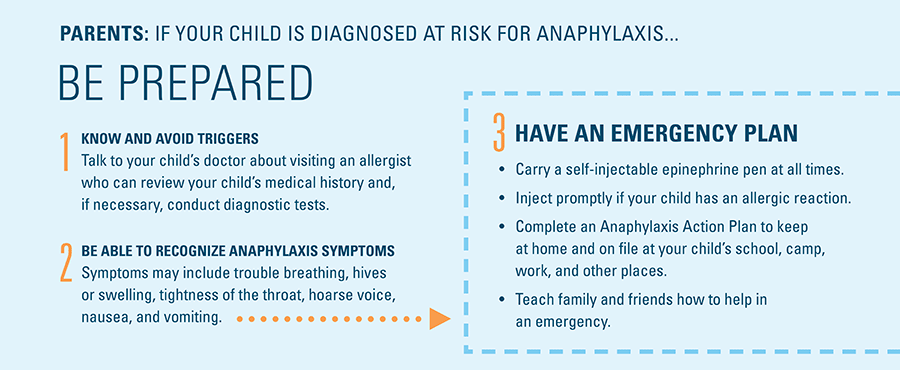
Parents: If your child is diagnosed at risk for anaphylaxis, be prepared. Number 1: Know and avoid triggers. Talk to your child's doctor about visiting an allergist who can review your child's medical history and, if necessary, conduct diagnostic tests. Number 2: Be able to recognize anaphylaxis symptoms. Symptoms may include trouble breathing, hives or swelling, tightness of the throat, hoarse voice, nausea, and vomiting. Number 3: Have an emergency plan. Carry a self-injectable epinephrine pen at all times. Inject promptly if your child has an allergic reaction. Complete an anaphylaxis action plan to keep at home and on file at your child's school, camp, work, and other places. And teach family and friends how to help in an emergency.

